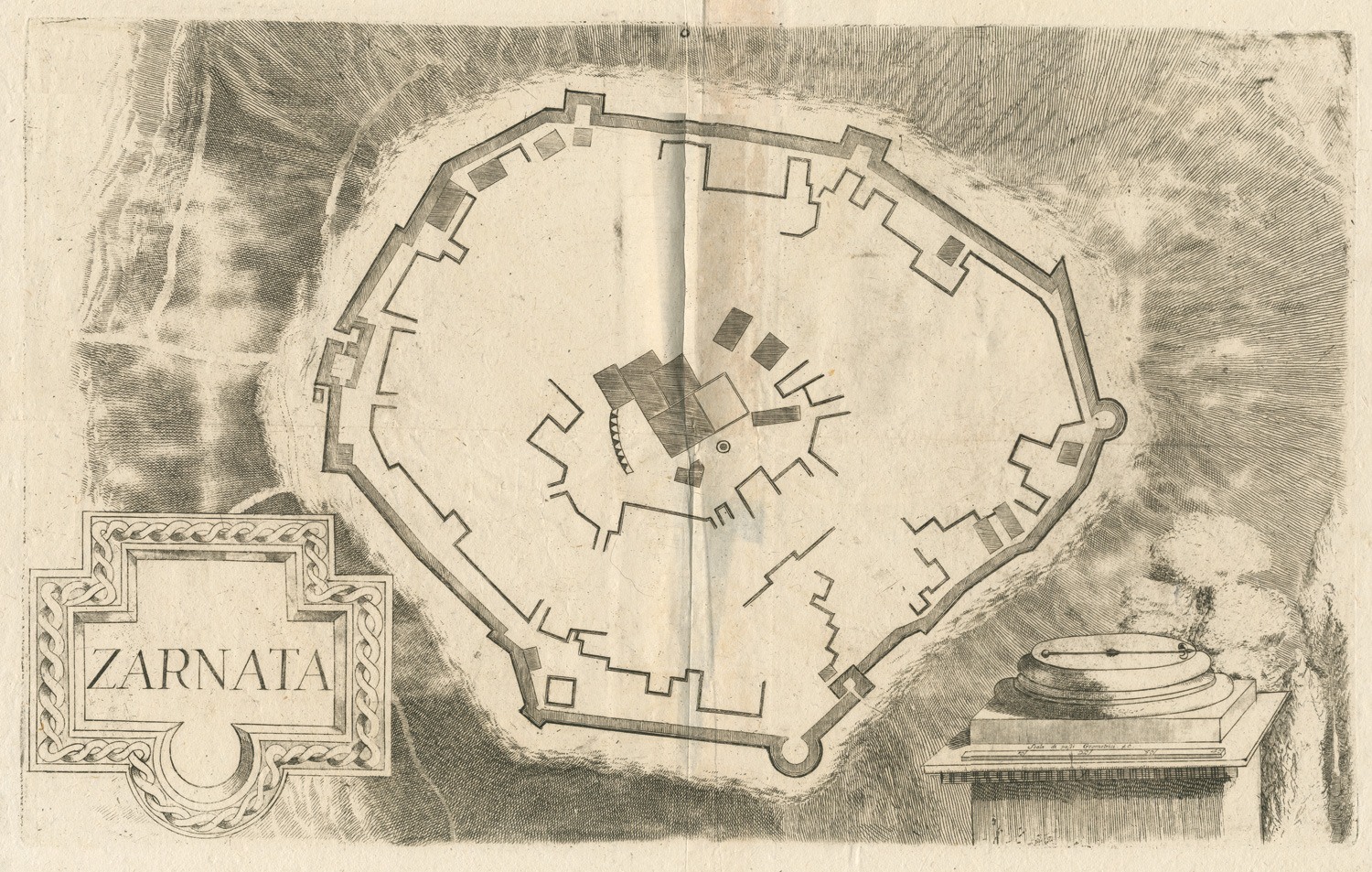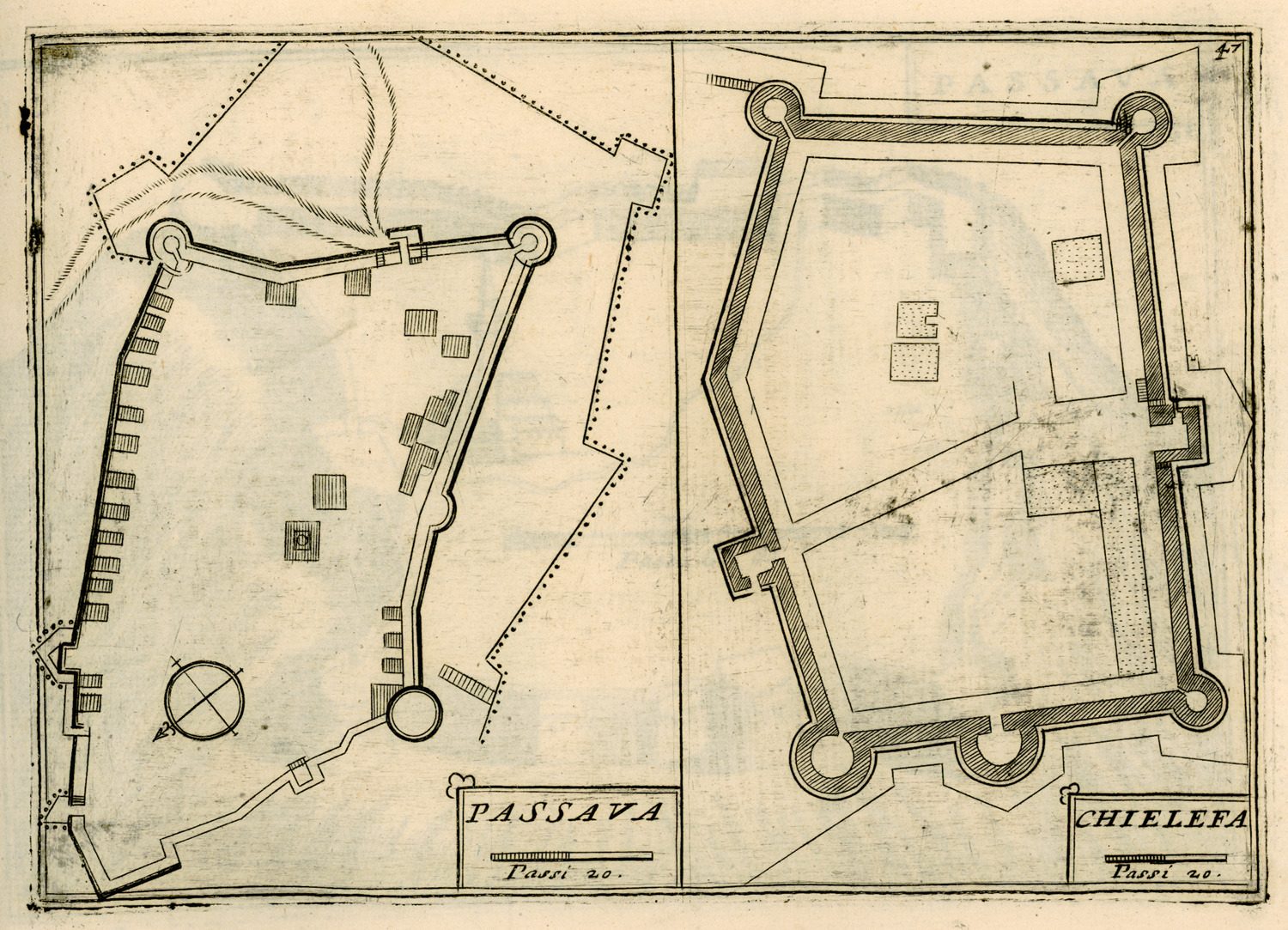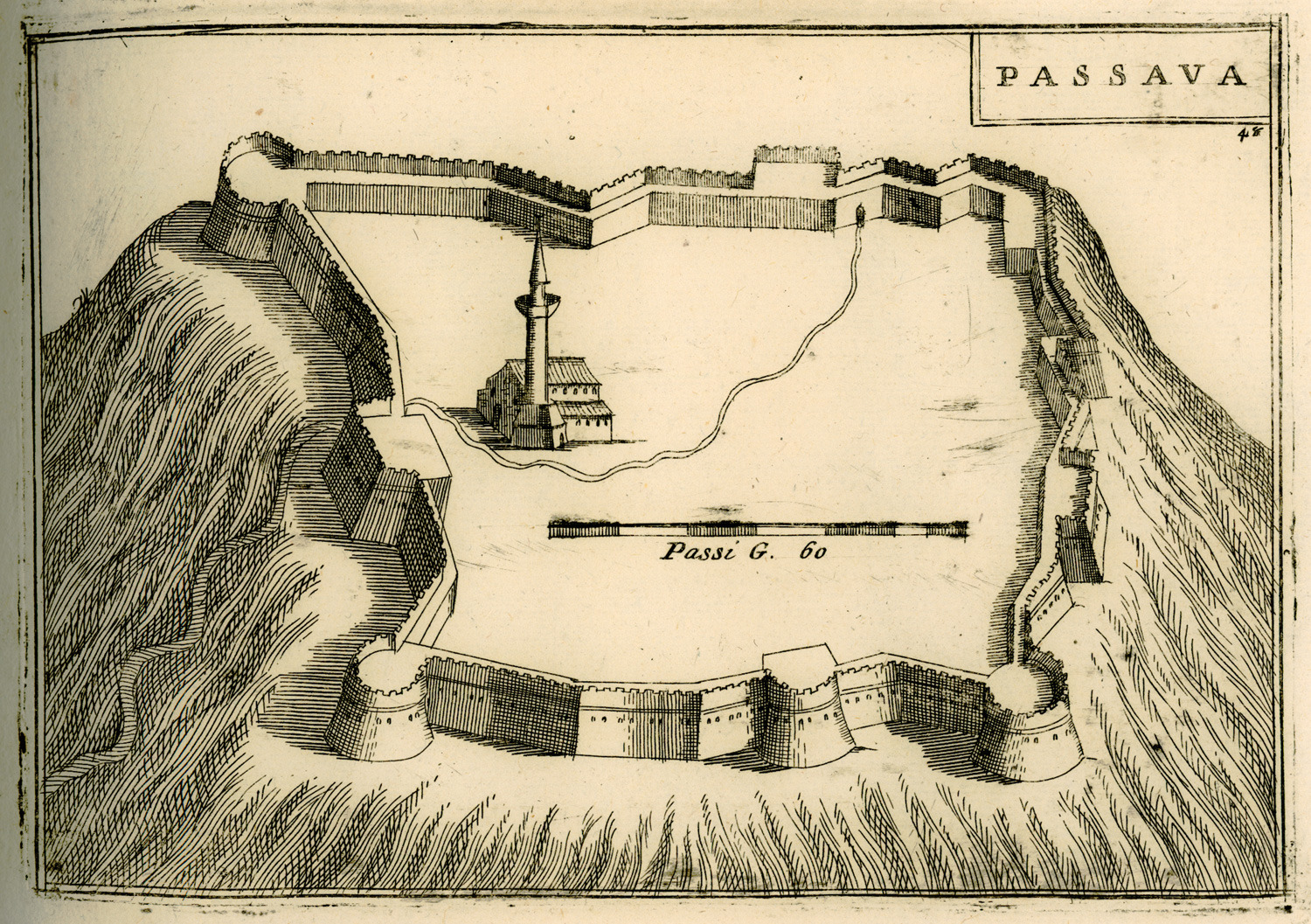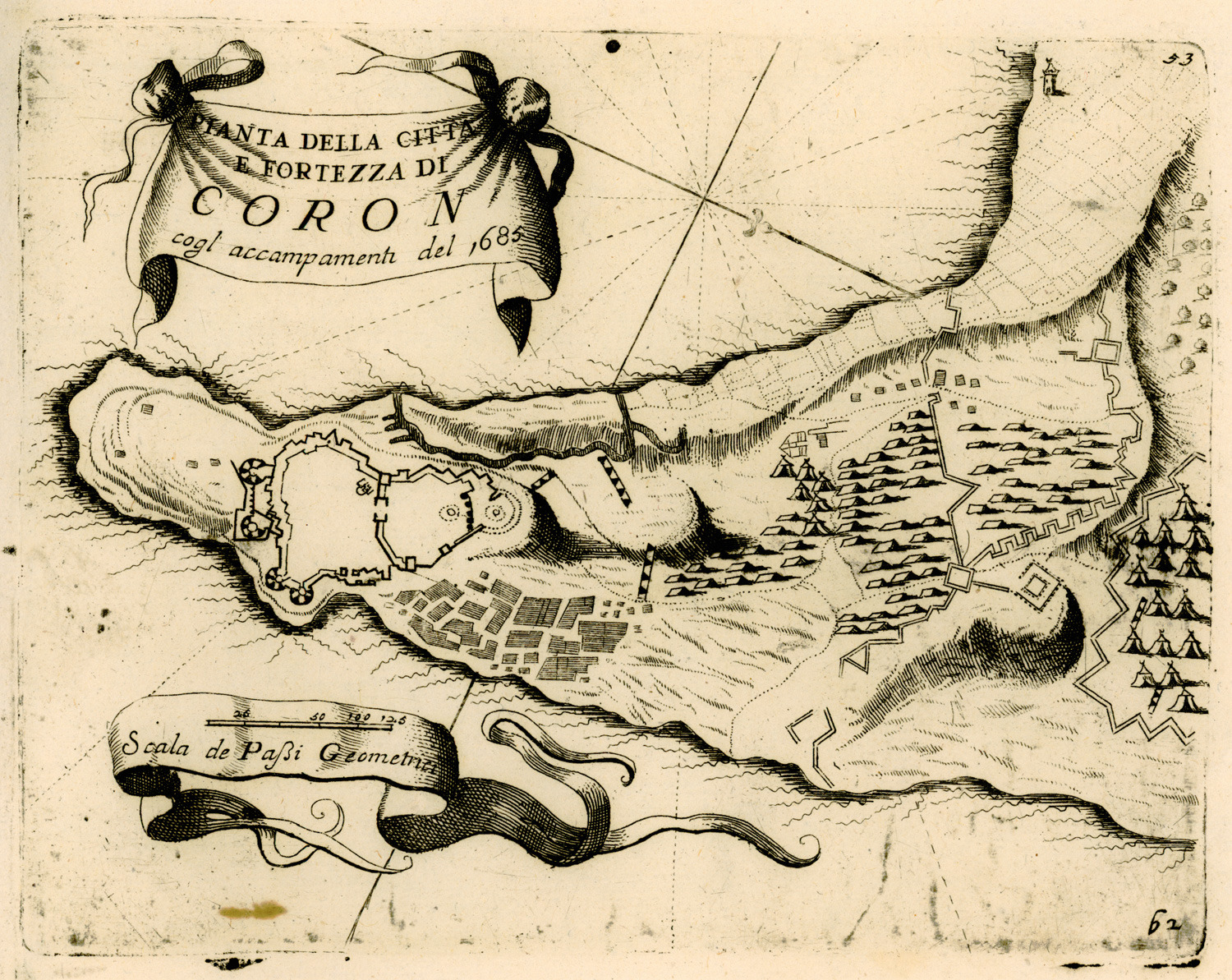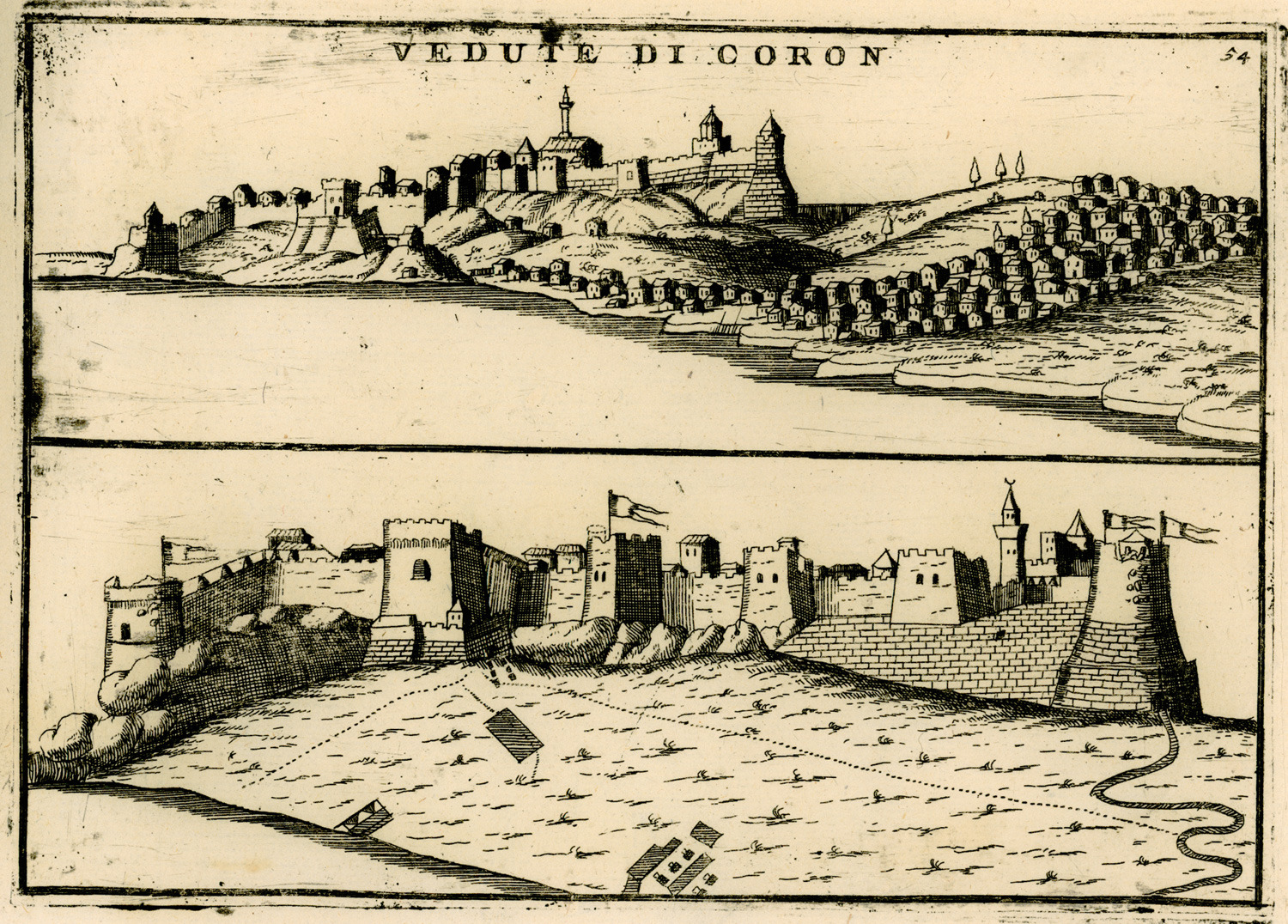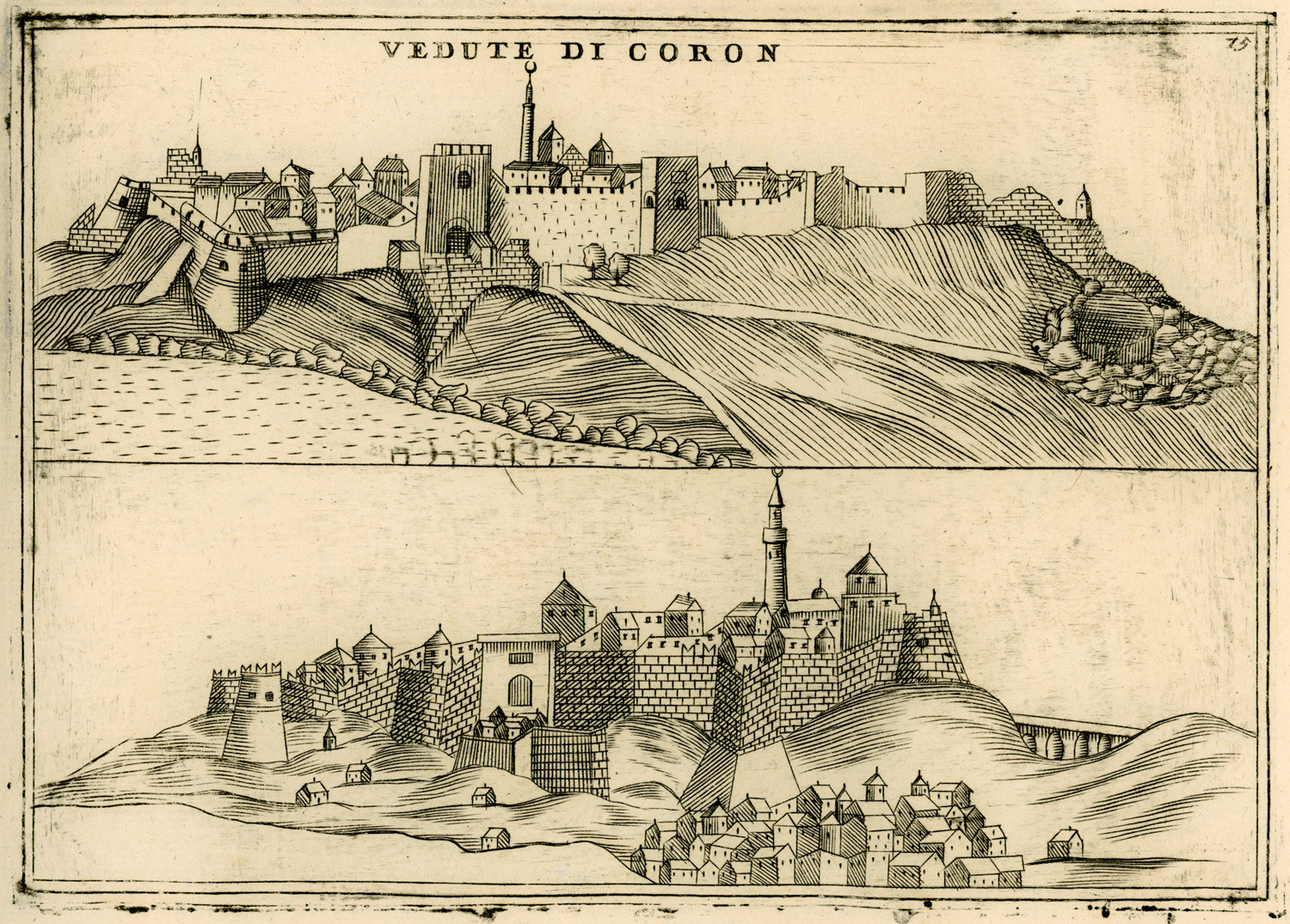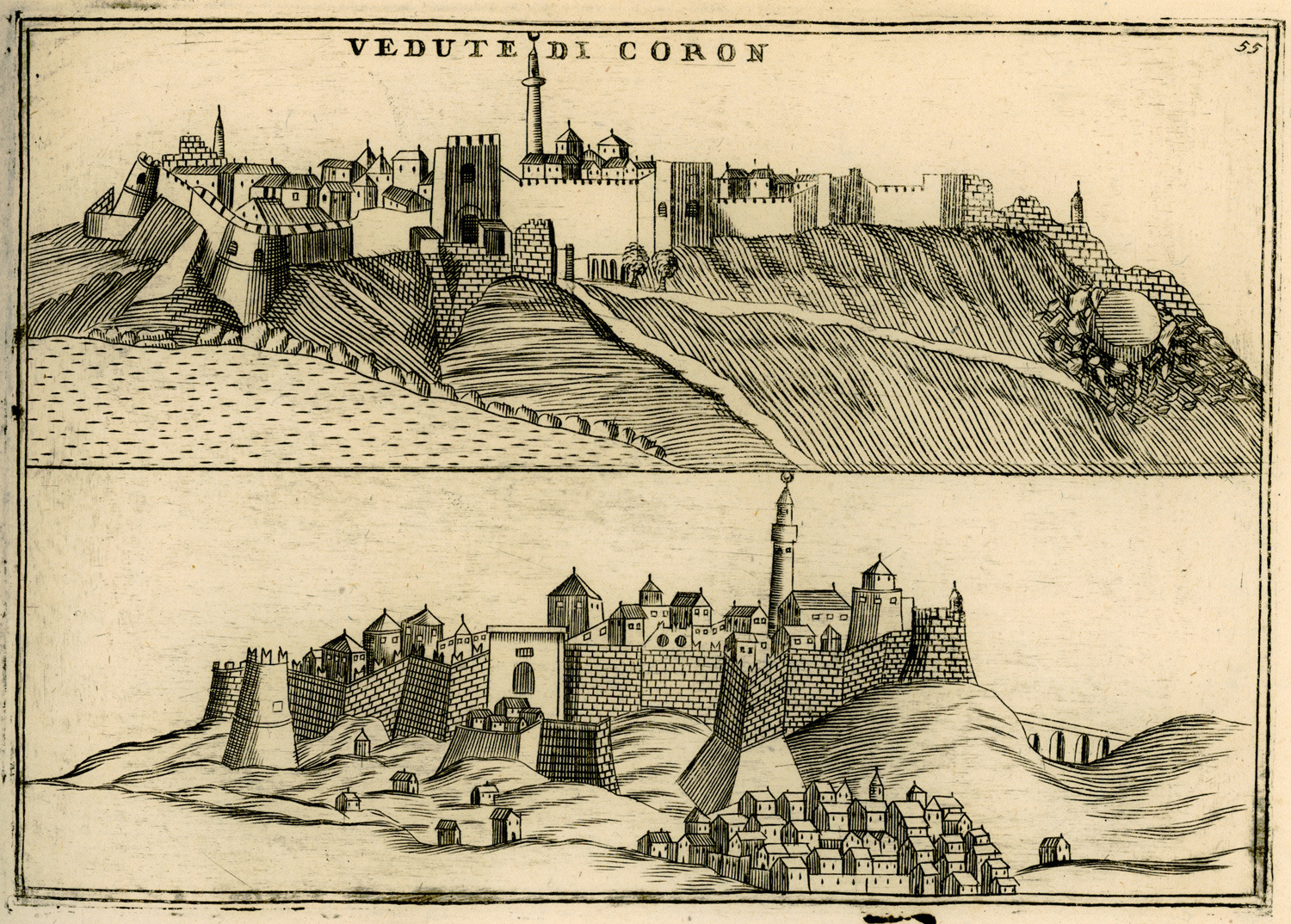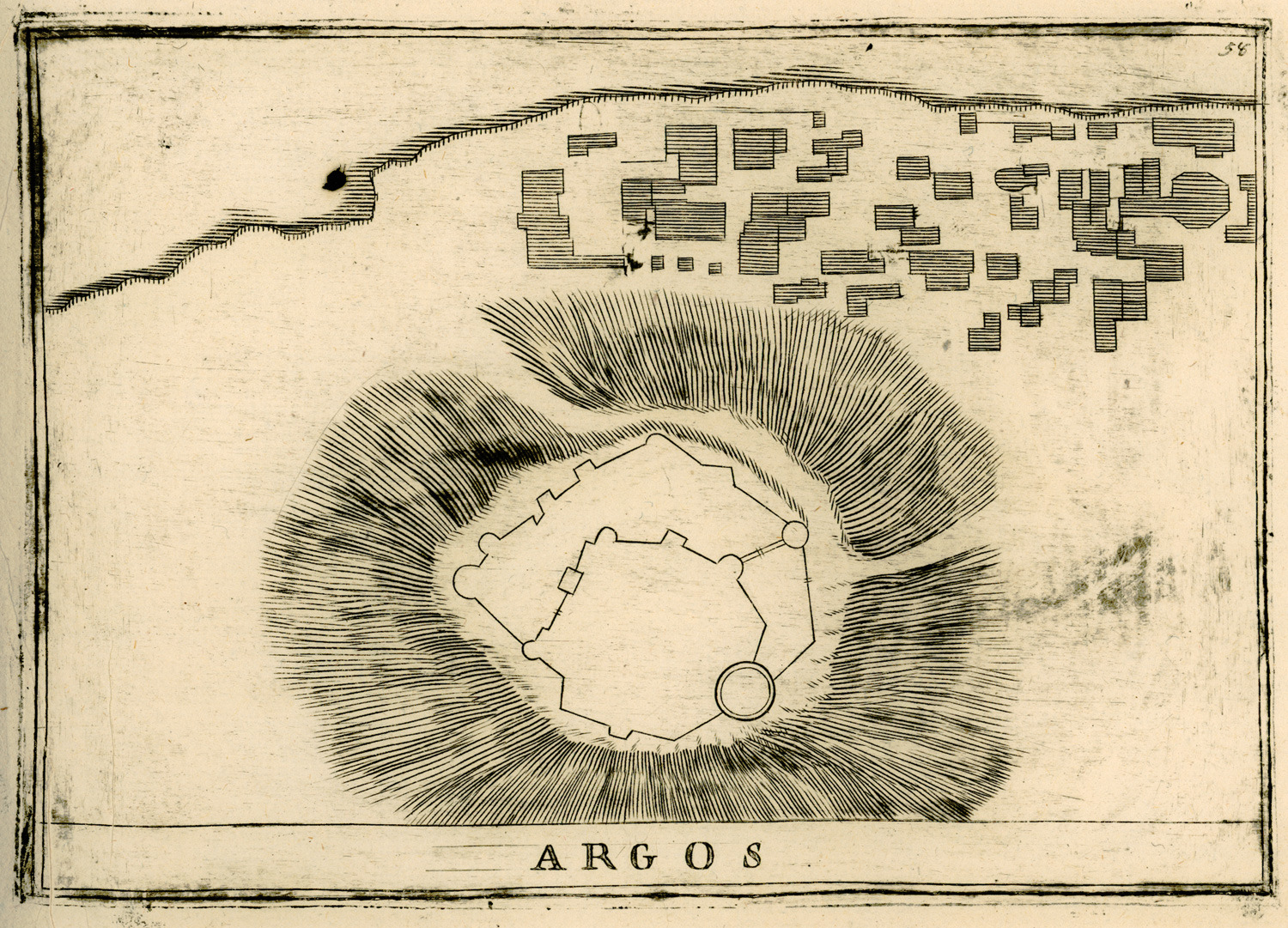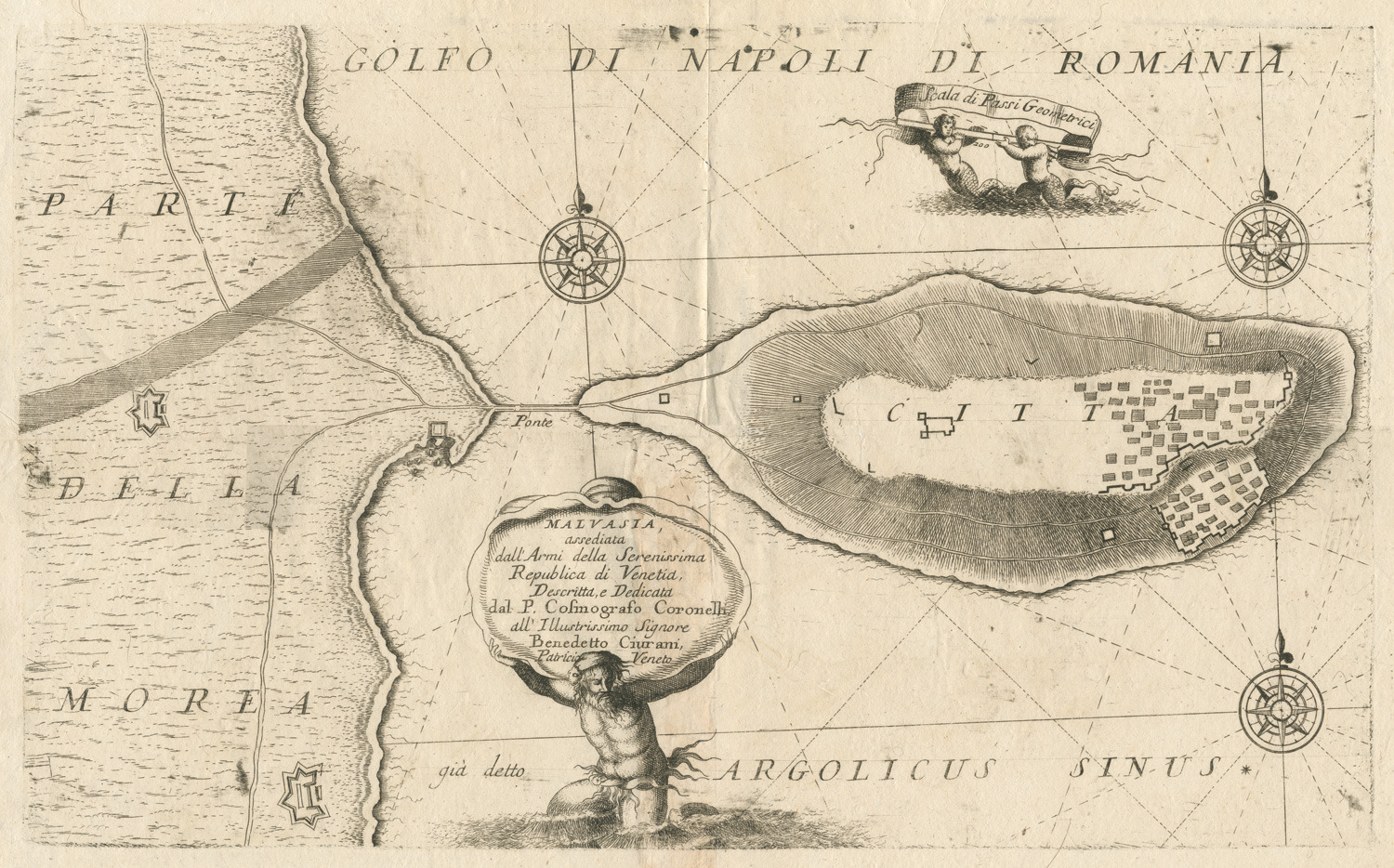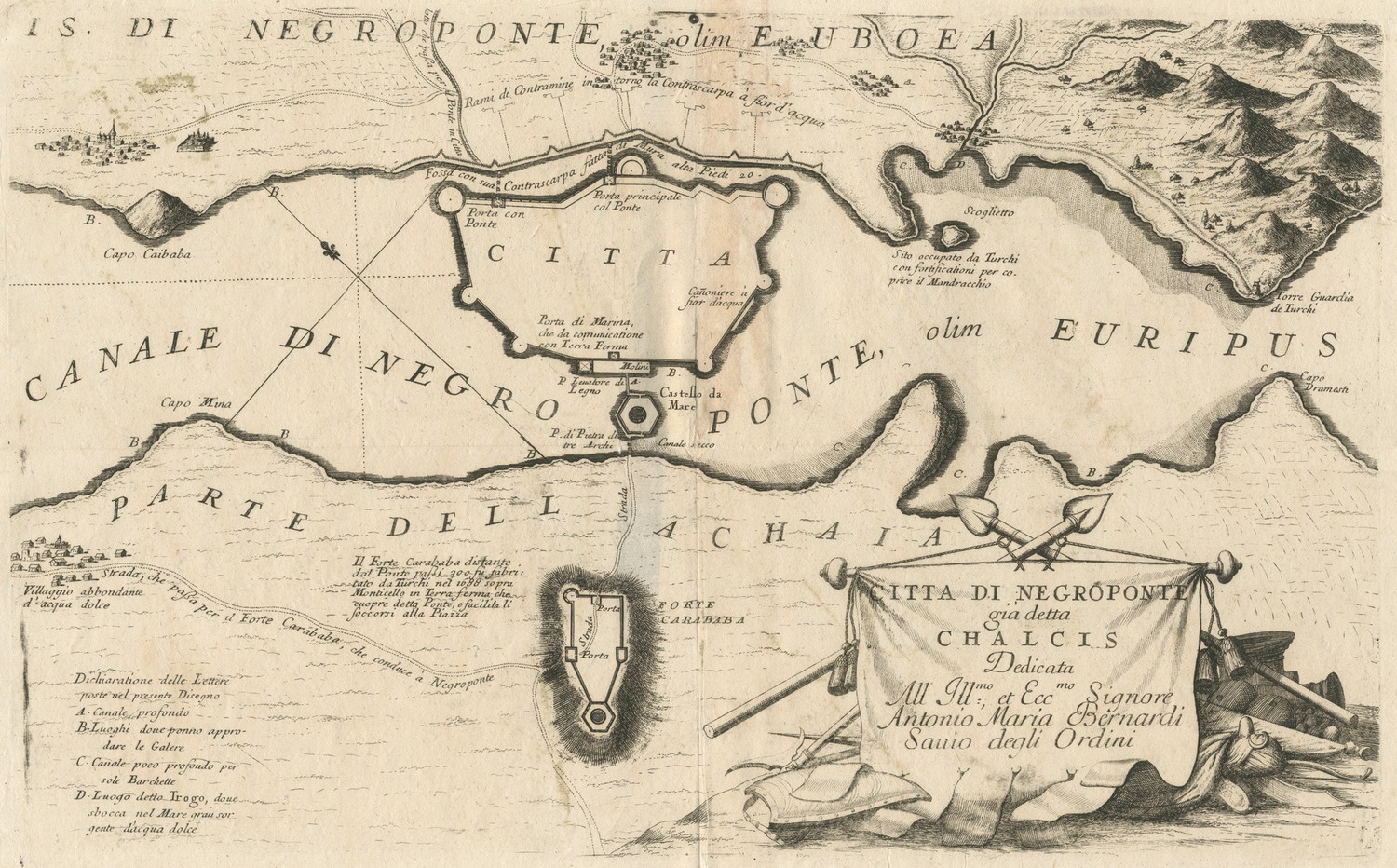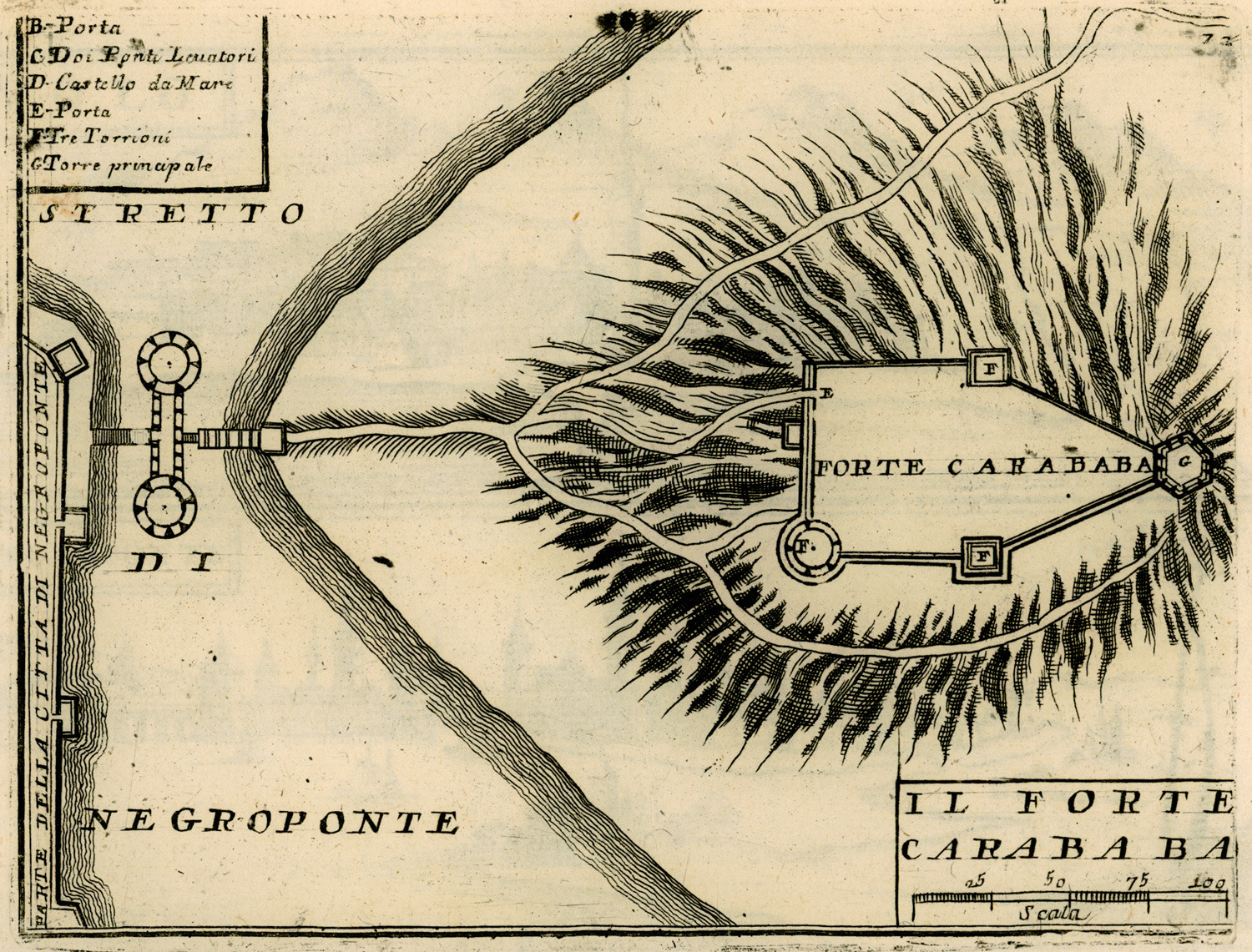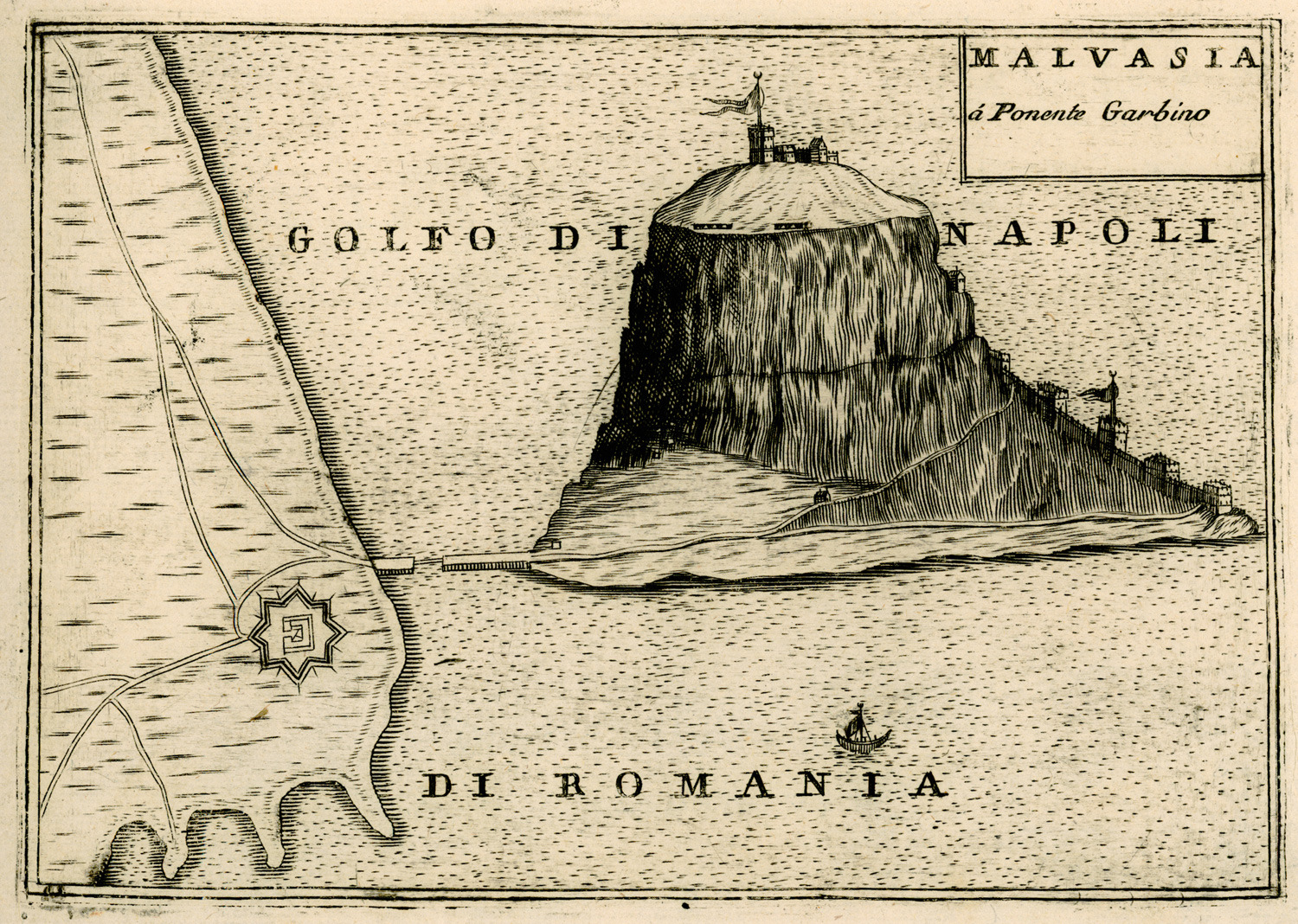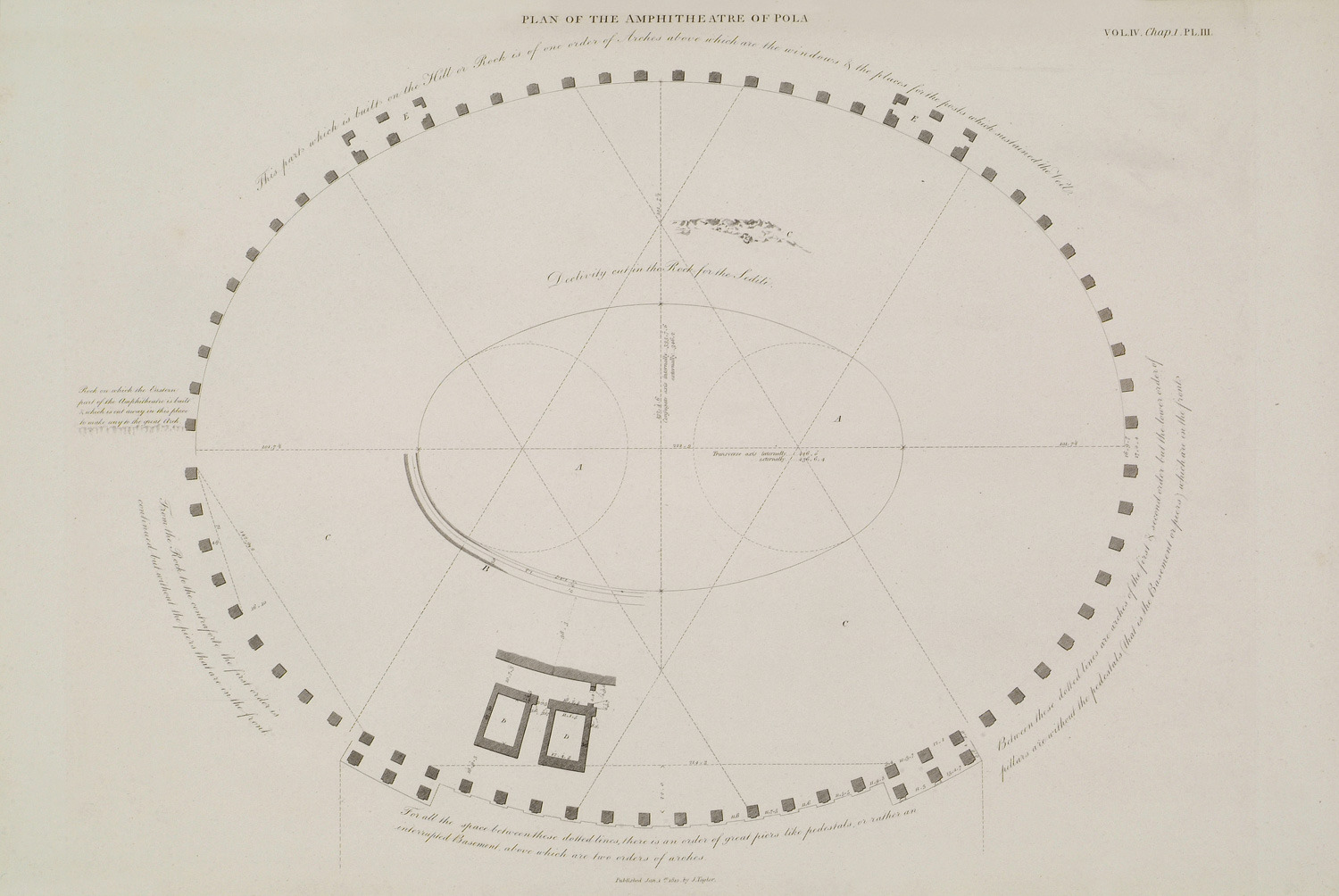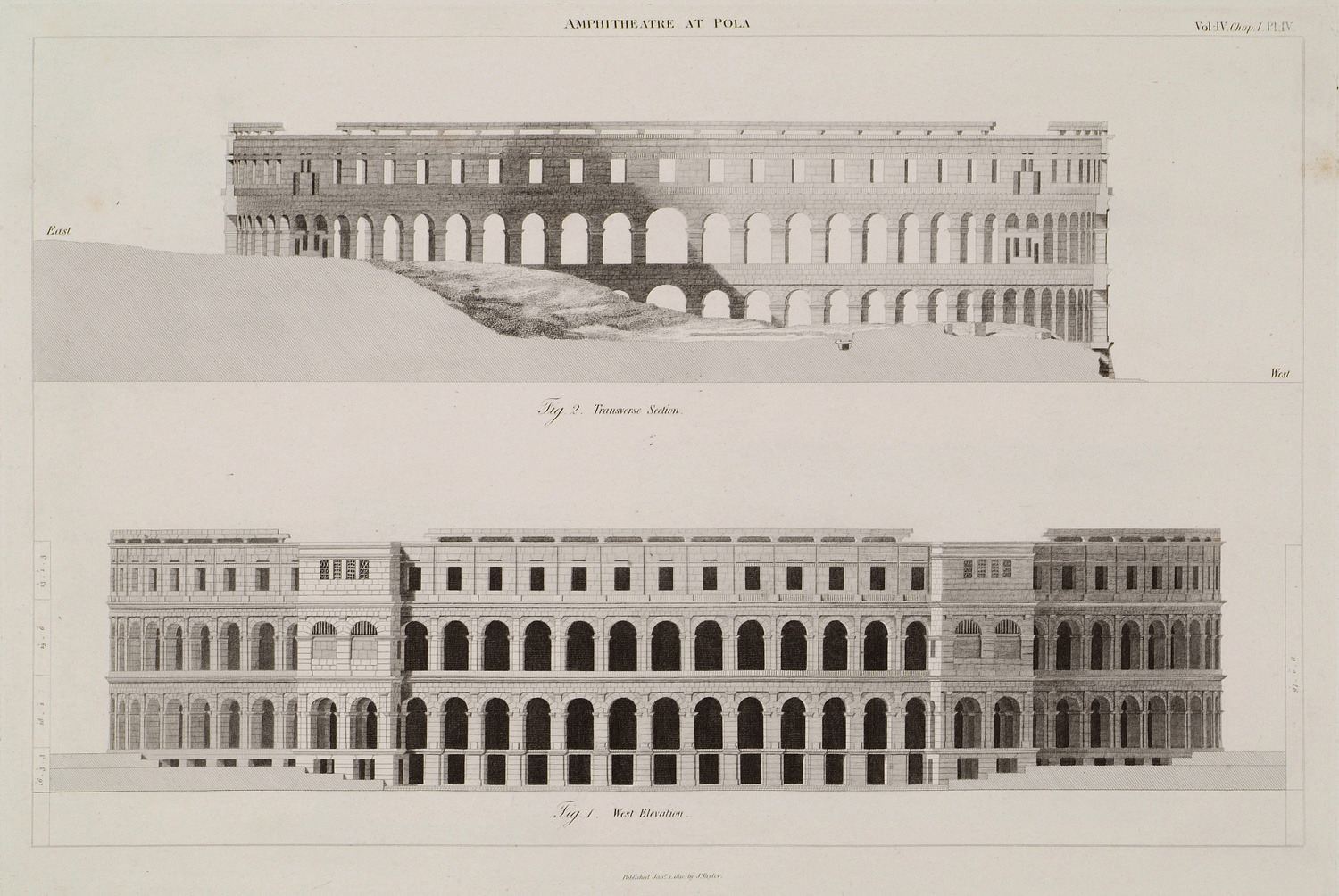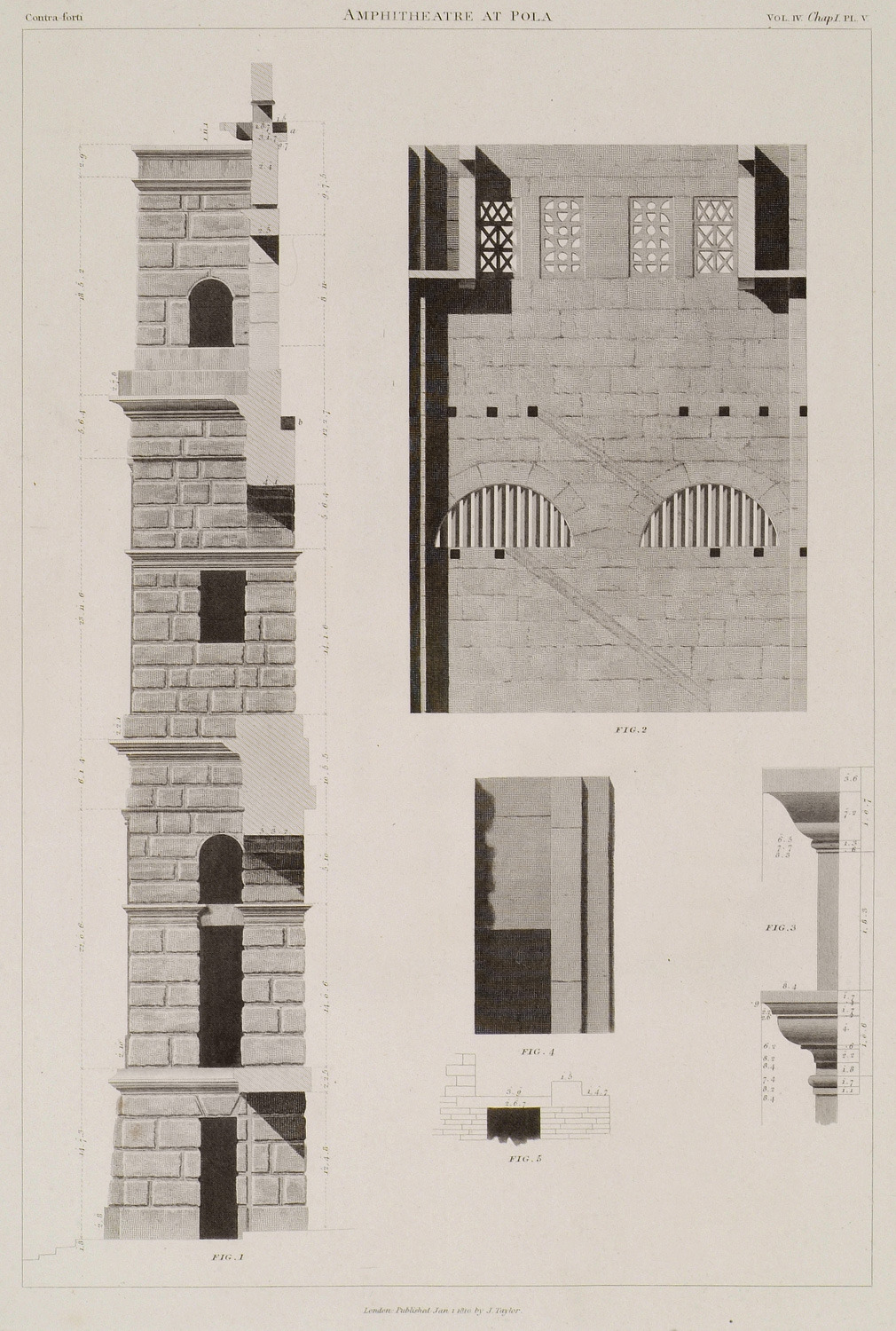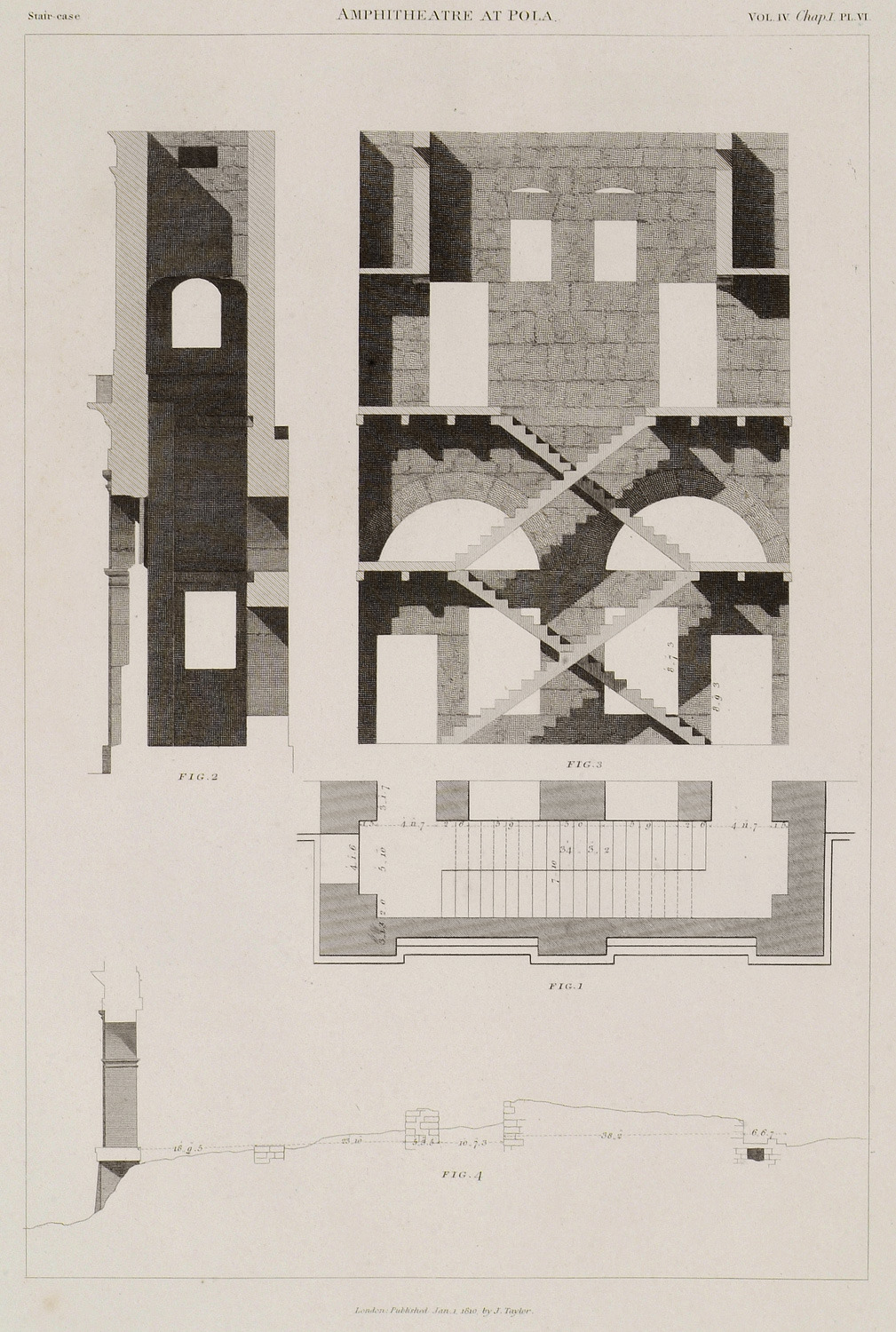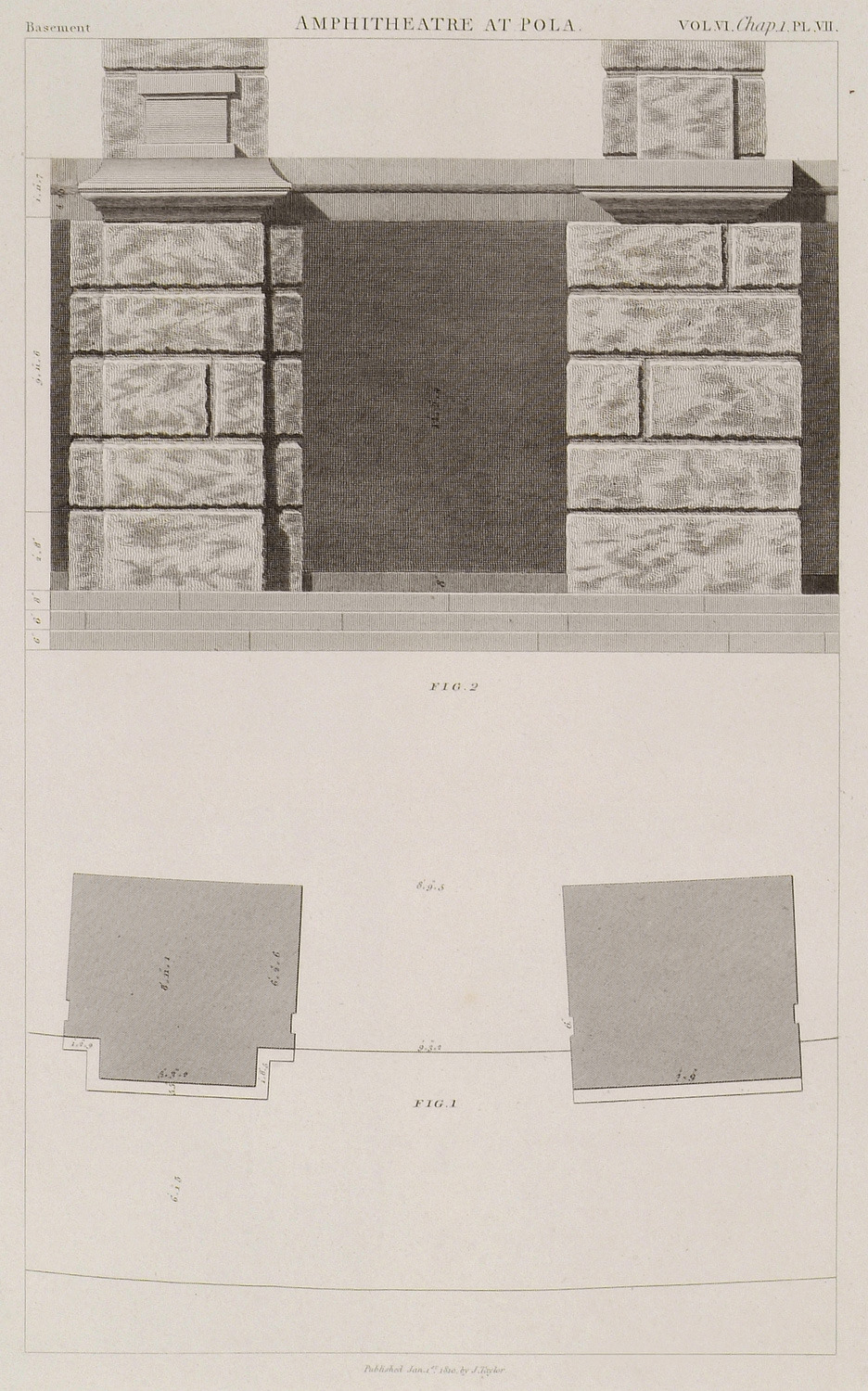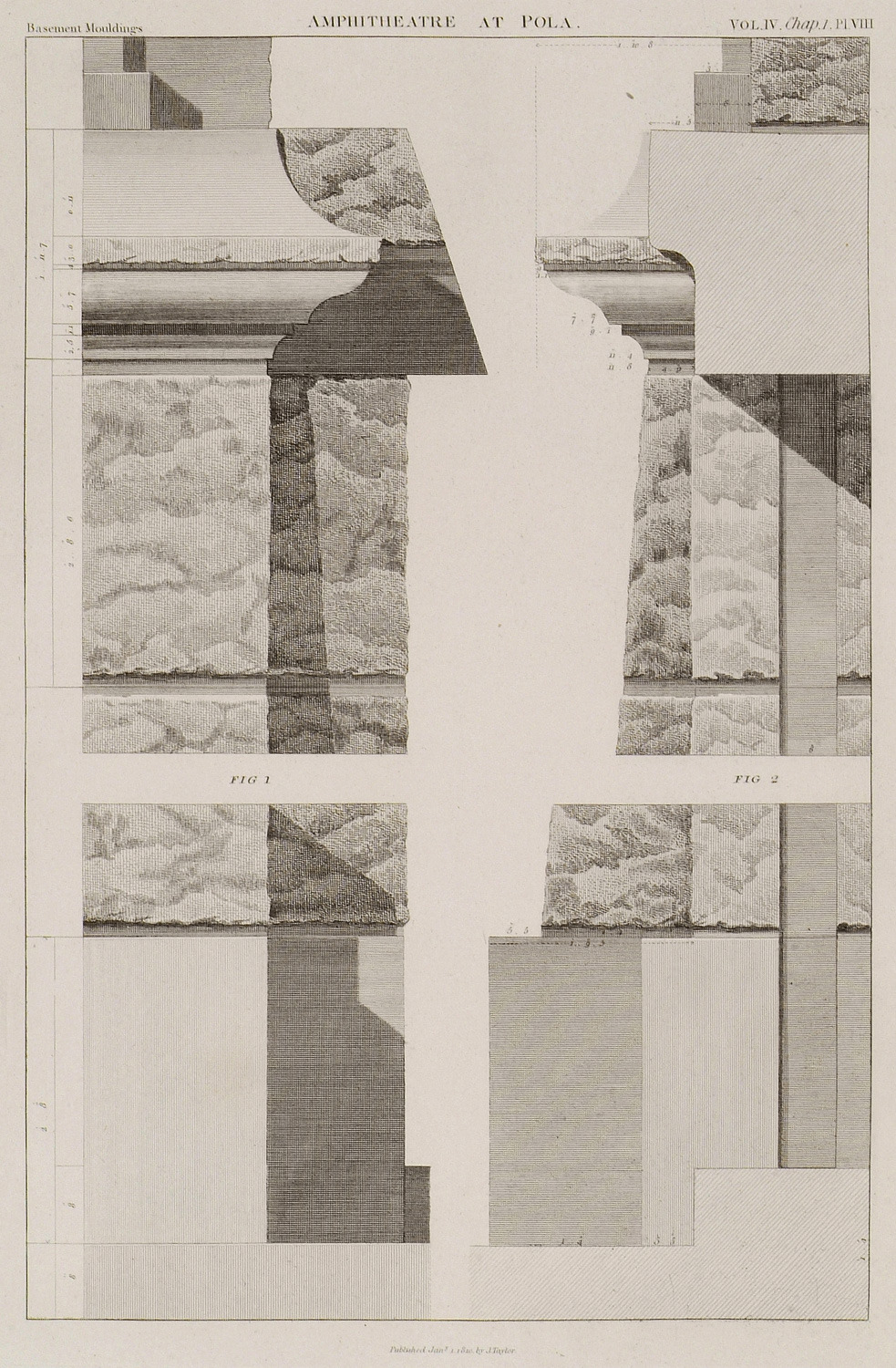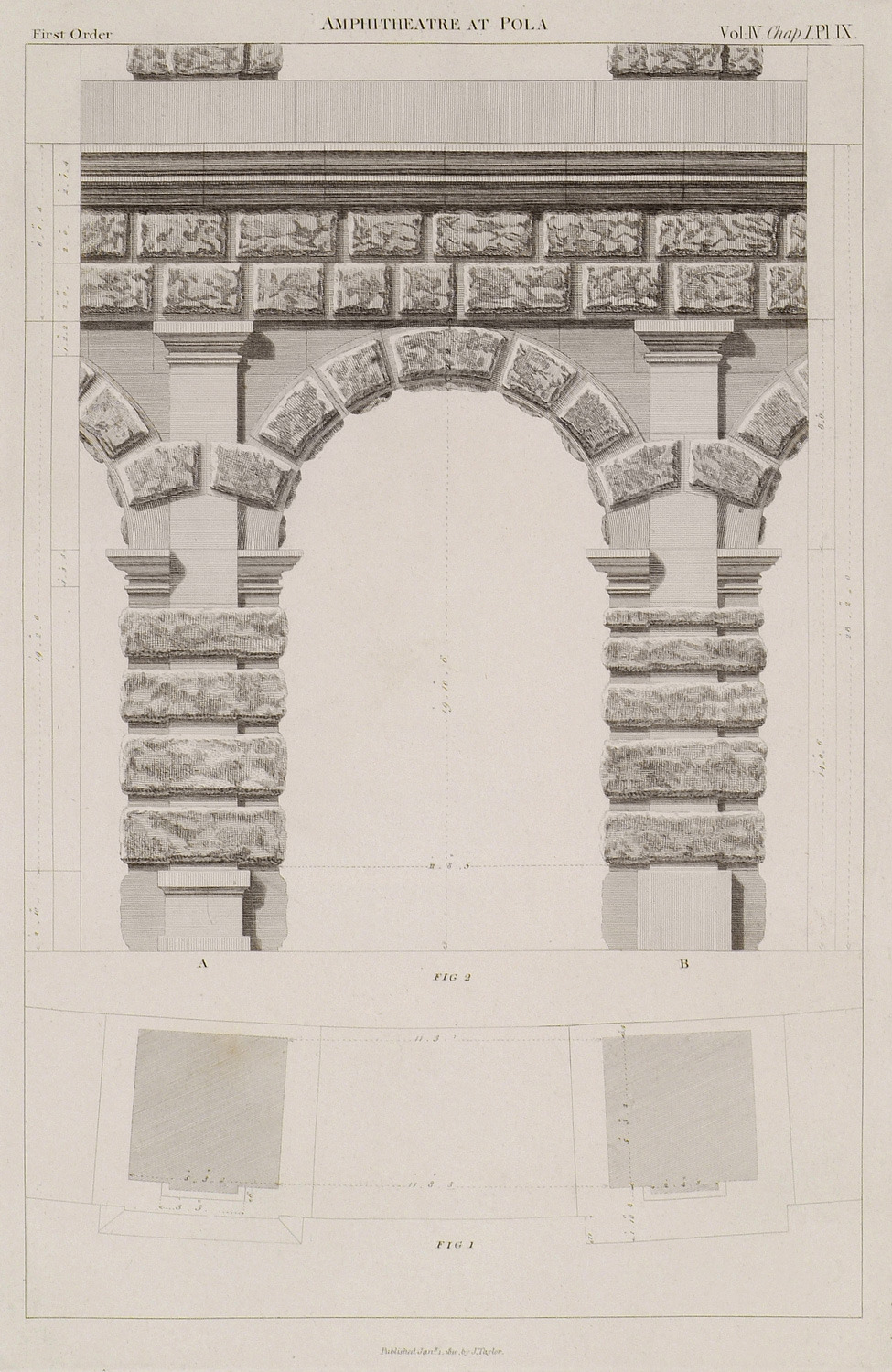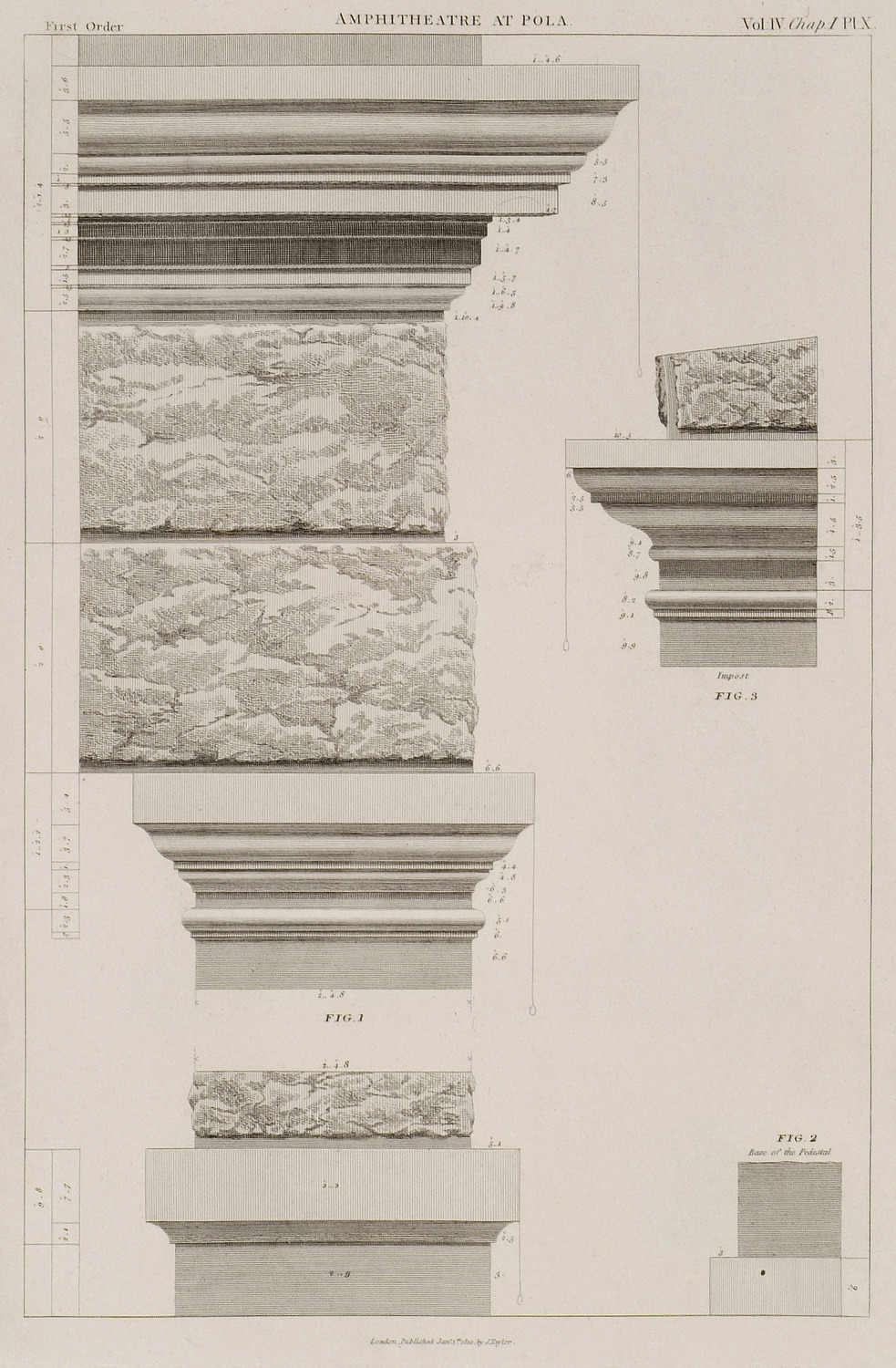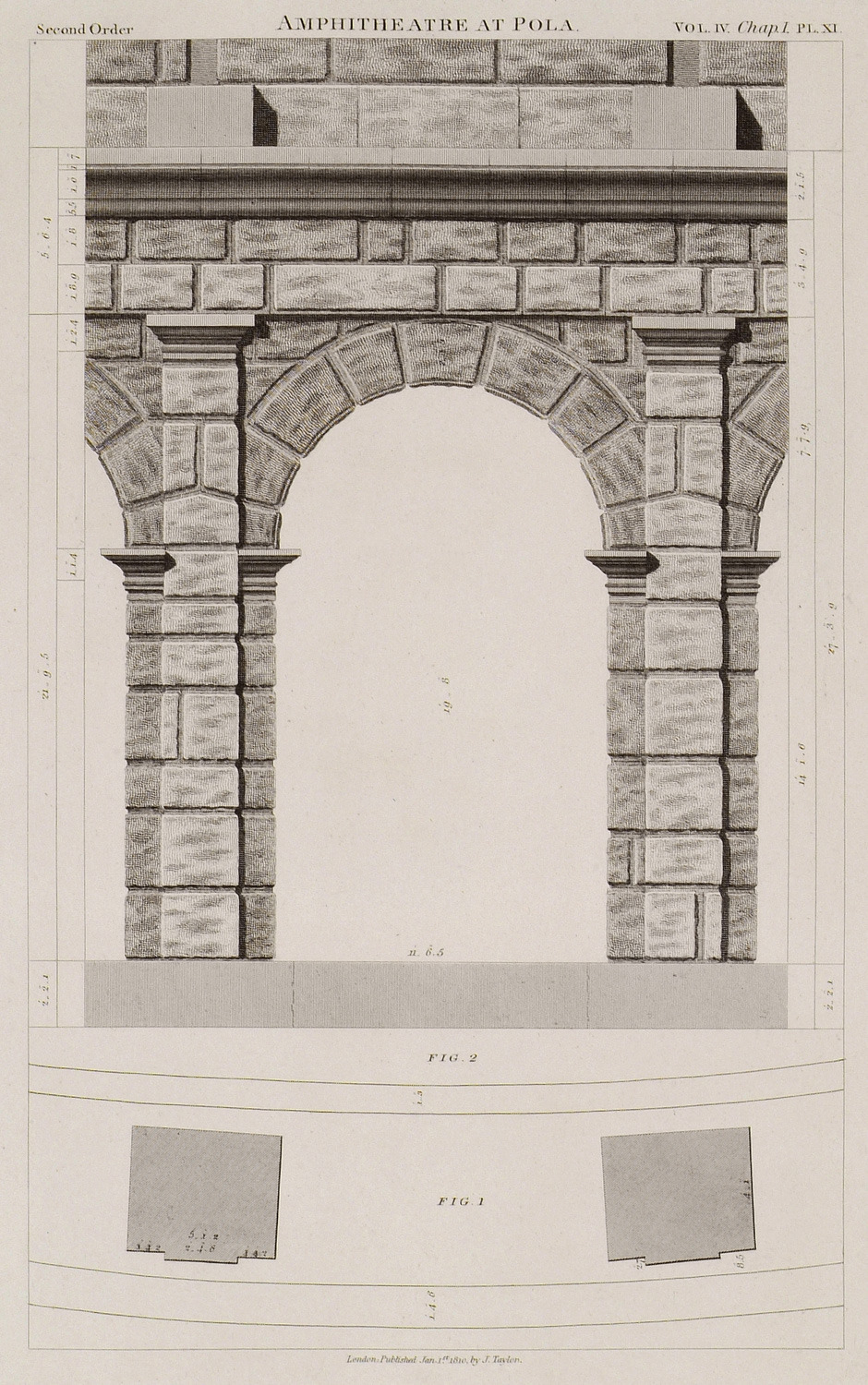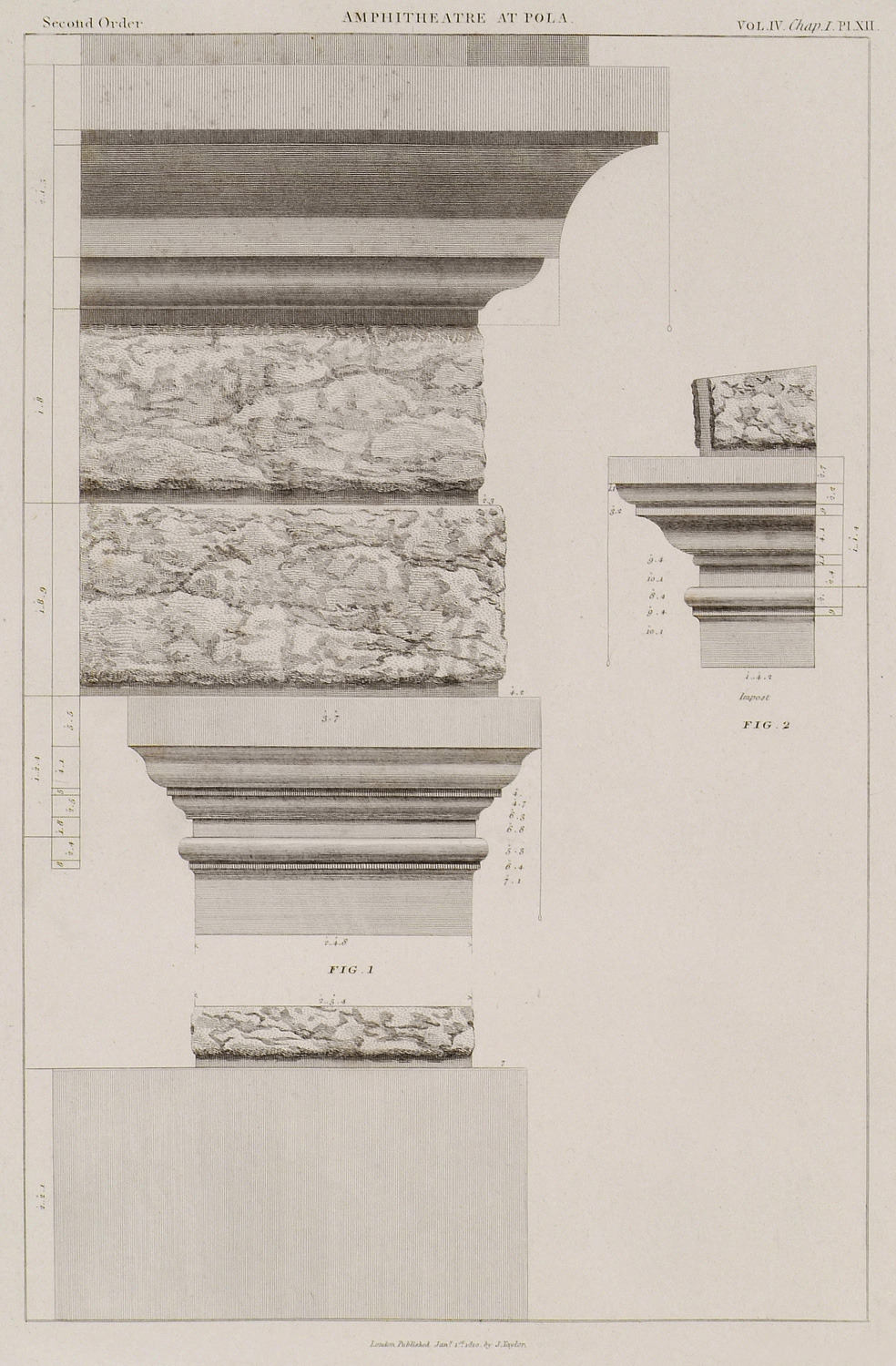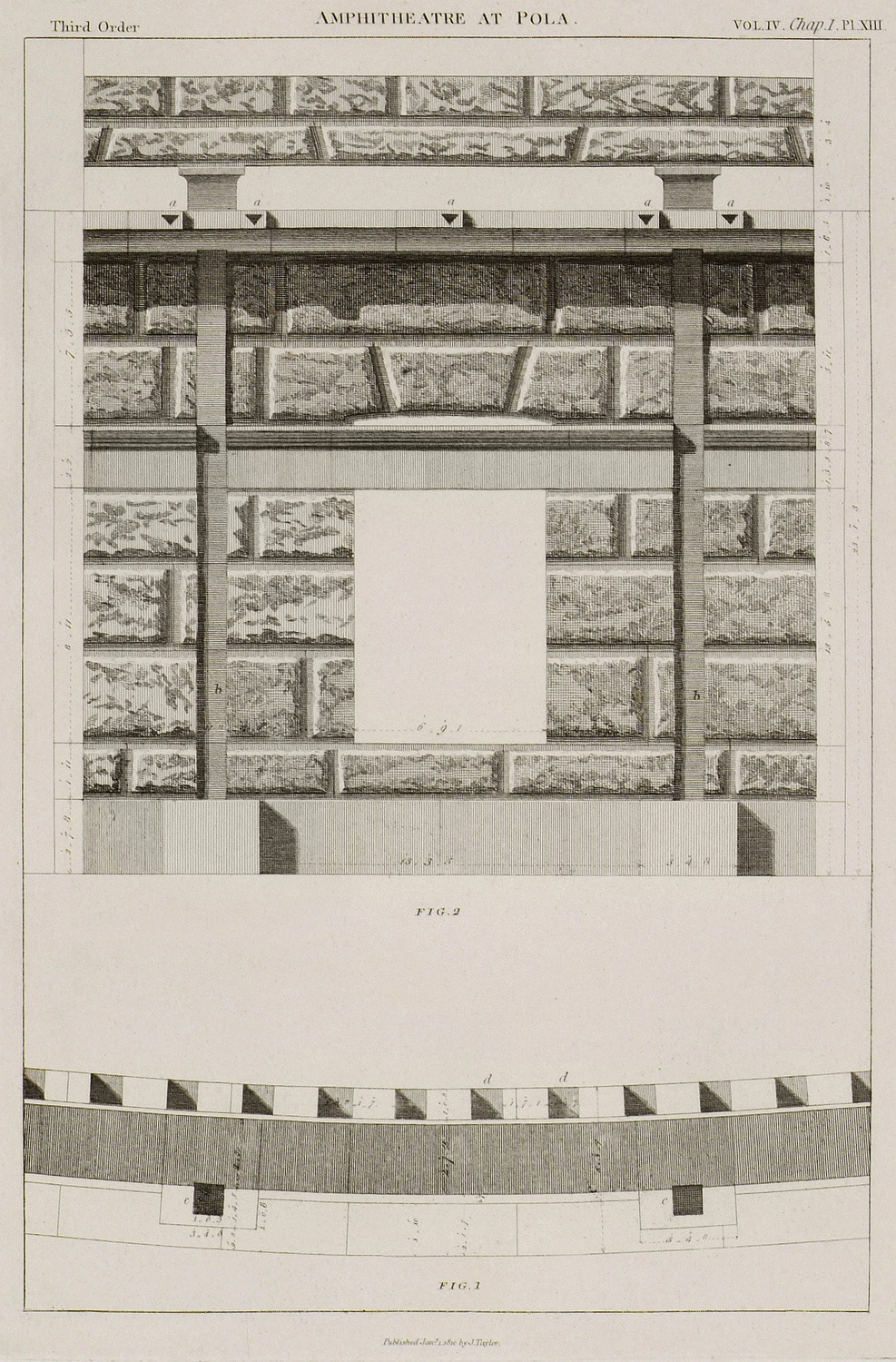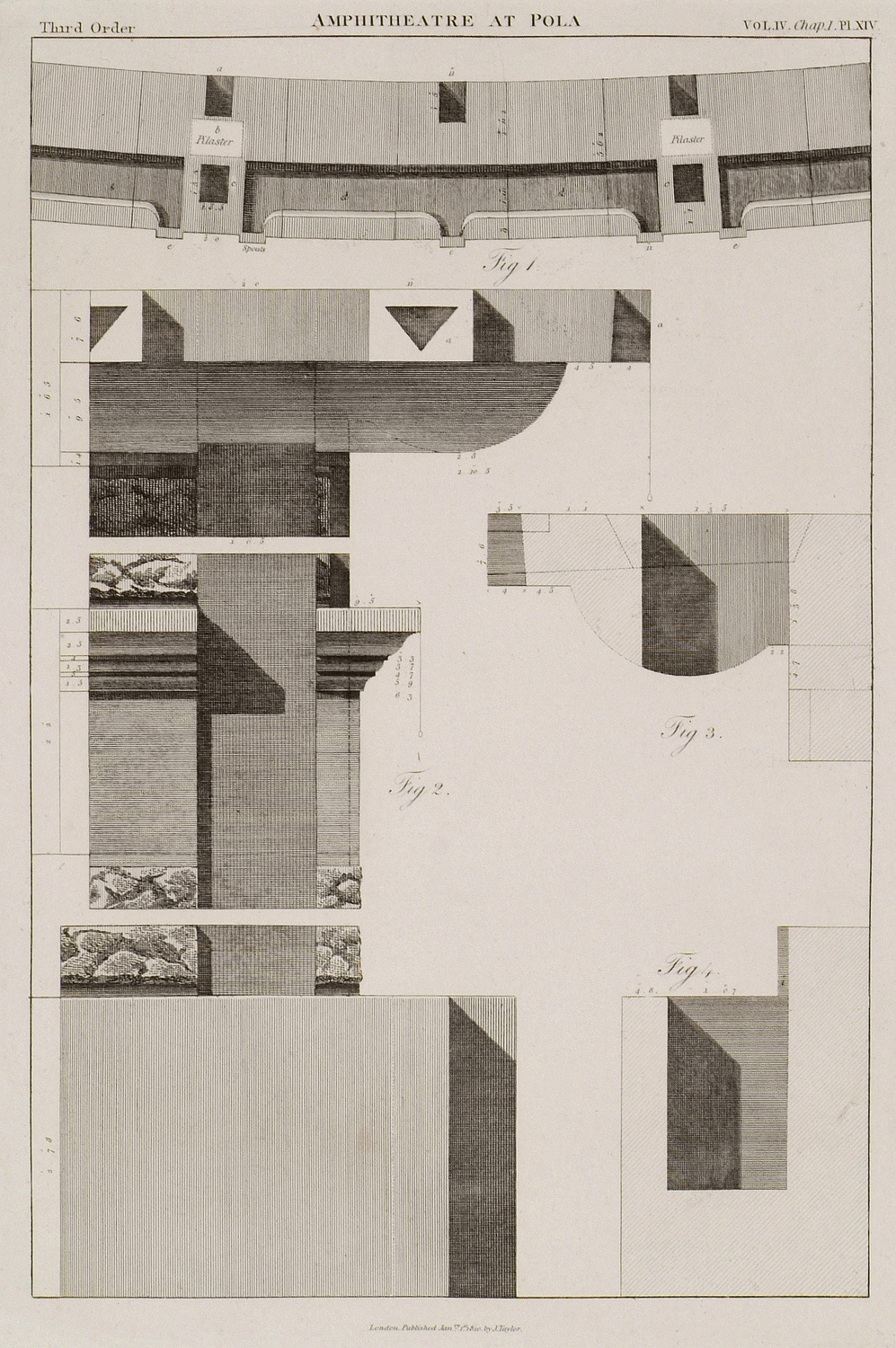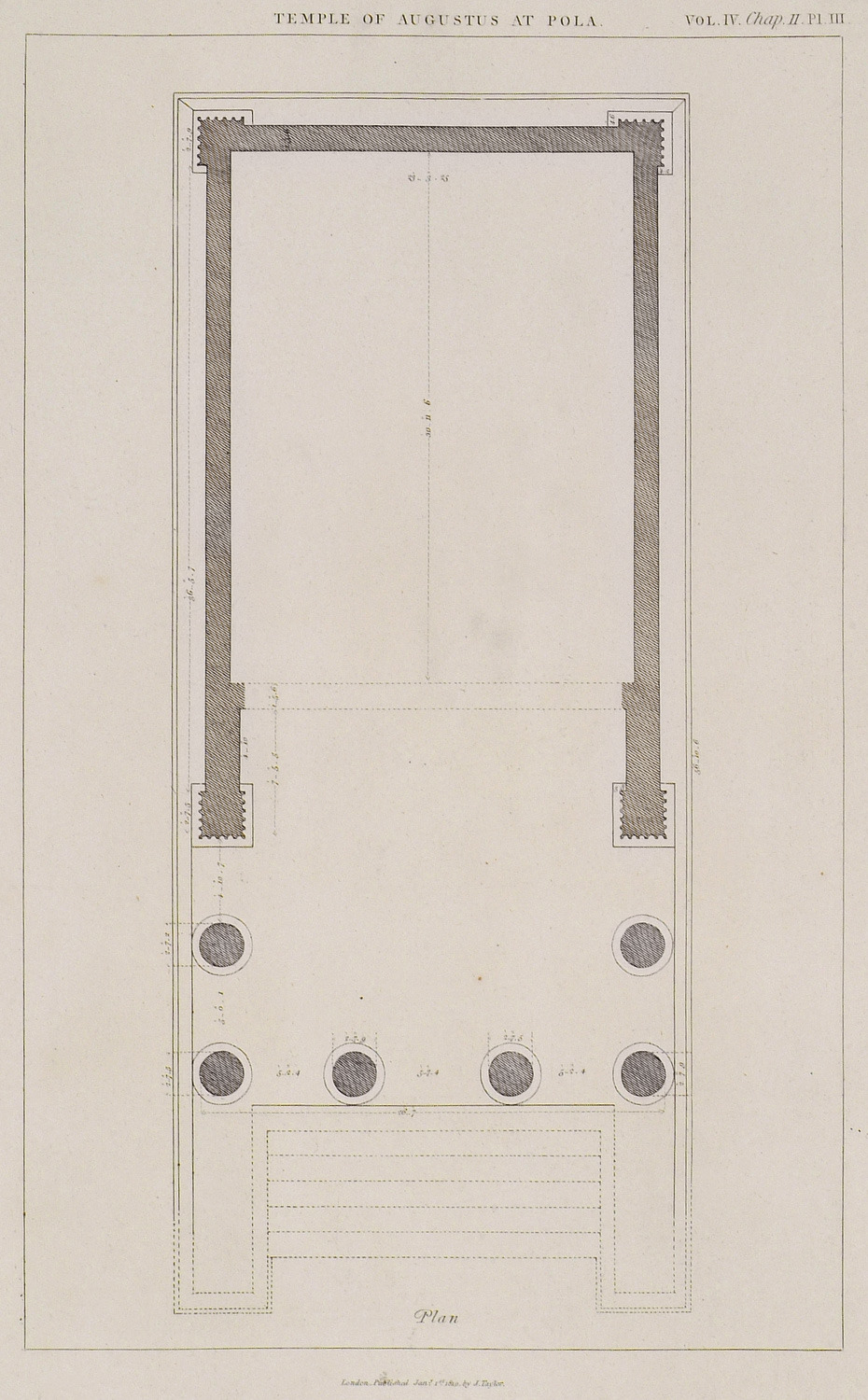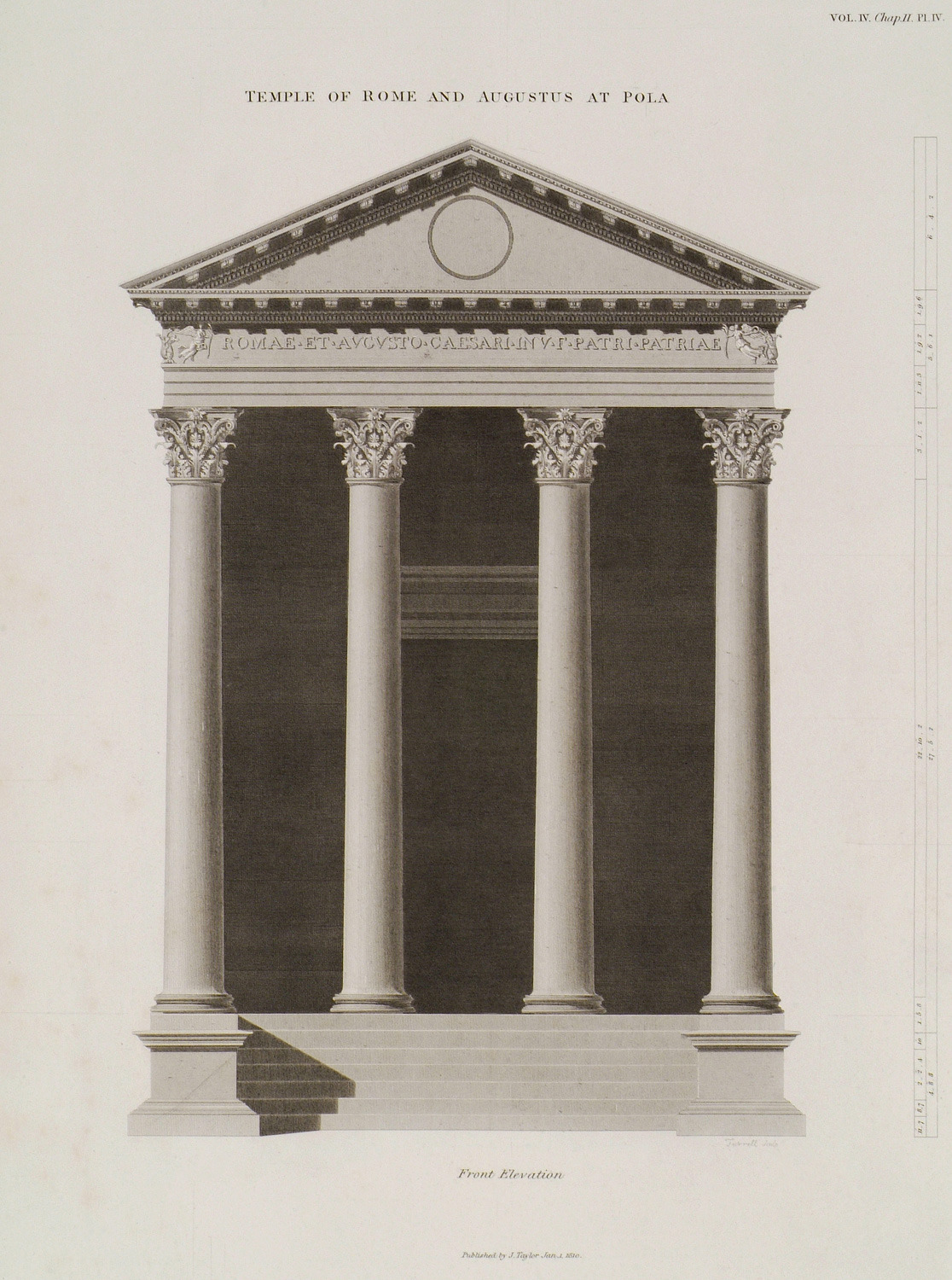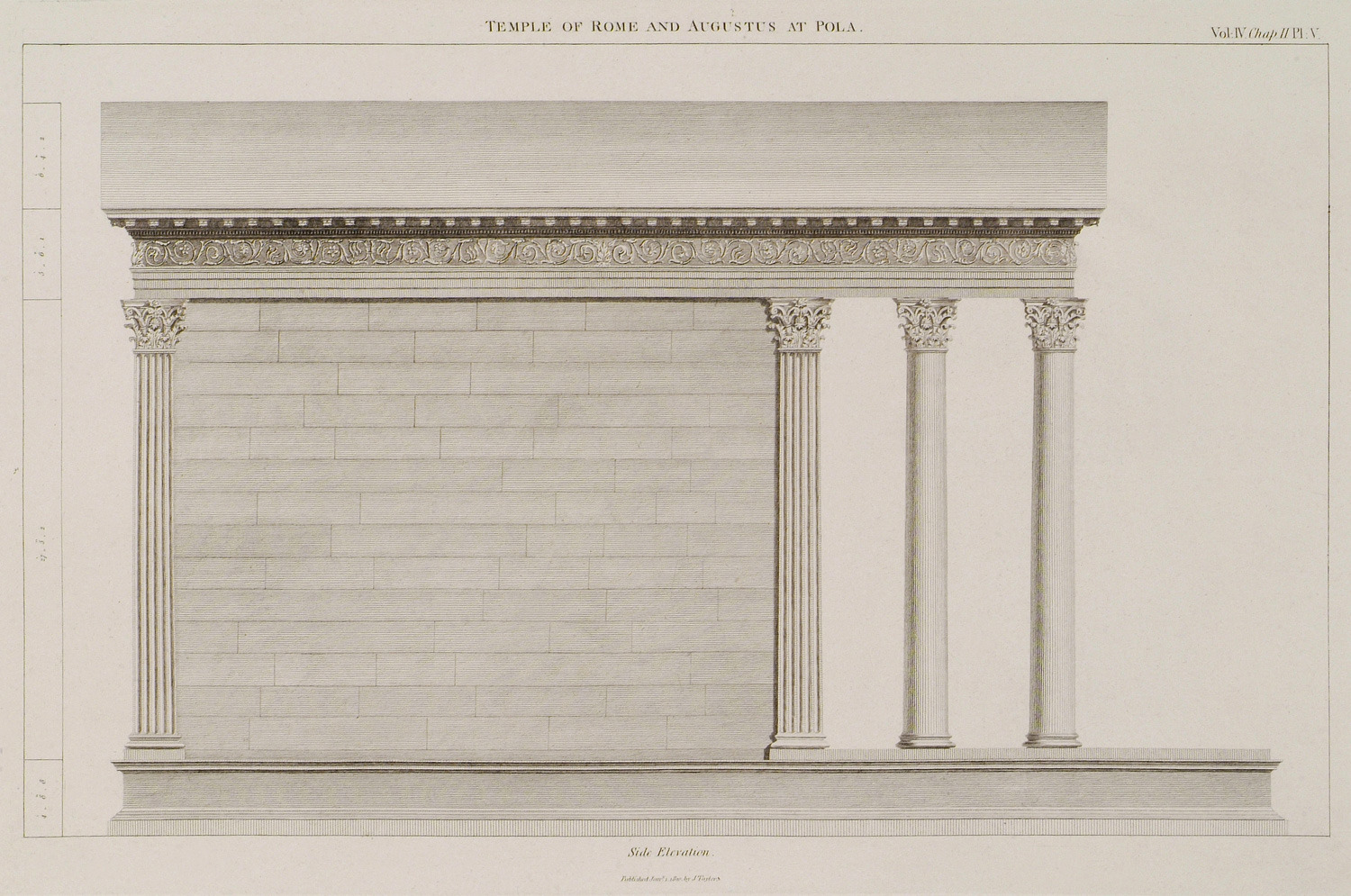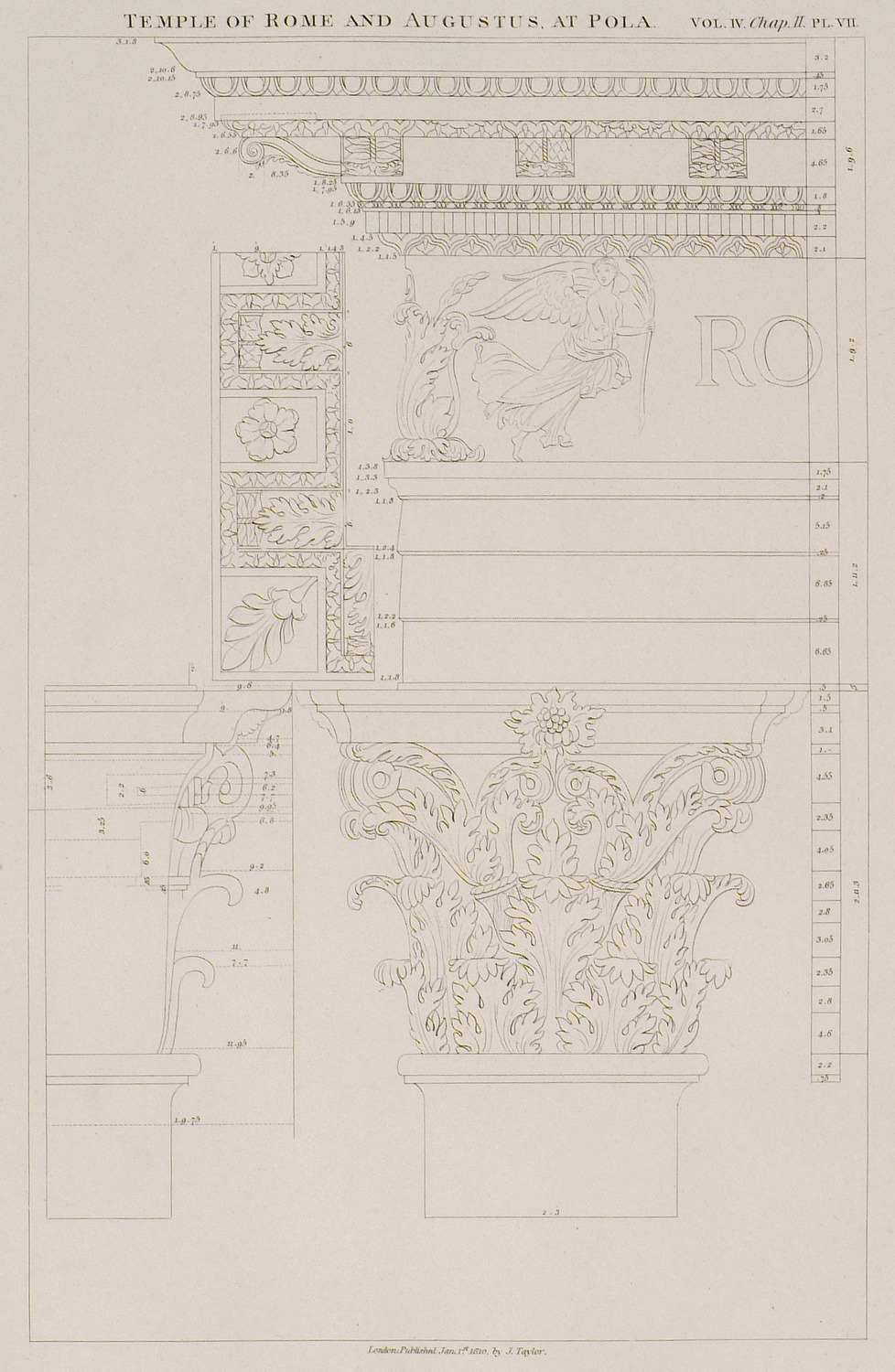Floor plans / Drawings (507 Subjects)
Floor plan of the castle of Zarnata.
Floor plan of Passava castle and Kelefa castle in the Peloponnese.
The castle of Passavas in the Peloponnese.
Map of Koroni with floor plan of the castle.
Two views of Koroni castle.
Two views of Koroni castle.
Two views of Koroni castle.
Floor plan of Larissa castle and of the village of Argos.
Map of Monemvasia.
Map of Chalcis area, with floor plan of the castle of Chalcis and Karababa castle.
Karababa fortress in Euboea.
Monemvasia from the southwest.
Plan of the Roman Amphitheater of Pula: A plan of the Amphitheatre. A. A. The area; B. The podium C.C. The space occupied by the seats. D.D. The prisons in which the animals were kept. E.E. The stair-cases.
Roman Amphitheater of Pula, Croatia: Fig. 1: The elevation of the west-side looking towards the port. Fig. 2: A section of its shortest diameter.
Roman Amphitheater of Pula, Croatia: Fig. 1: Side elevation of the contraforte, with a section of the wall of the amphitheatre. Fig.2: Longitudinal section of the upper part of the contraforte: marks of the line of steps are still visible.[...] Fig. 3: External mouldings at the summit of the contraforte. Fig. 4: Plan and Fig. 5: Section of the walls immediately surrounding the arena. These walls form what is called the podium in the description of the plan.
Roman Amphitheater of Pula, Croatia: Fig. 1: Plan of one of the contraforti, shewing the arrangement of the stair-cases. Fig. 2: Transverse section of ditto. Fig. 3: Londitudinal section towards the body of the amphitheatre, with the steps restored. Fig. 4: Section through the outer wal of the amphitheatre, the remaining fragments of the prisons, and the podium.
Roman amphitheater of Pula, Croatia: Basement Story. Fig. 1: Plan. Fig. 2: Elevation.
Roman Amphitheater of Pula, Croatia: Mouldings of the Basement Story. Fig. 1: Elevation. Fig. 2: Section.
Roman Amphitheater of Pula, Croatia: First Order. Fig. 1: Plan. Fig. 2: Elevation.
Roman Amphitheater of Pula, Croatia: Mouldings of the First Order. Fig. 1: Base, capital and entablature. (The ornamental pedestal is here introduced) Fig. 2: Base of the pedestal. Fig. 3: Impost moulding of the arch.
Roman Amphitheater of Pula, Croatia: Second Order. Fig. 1: Plan. Fig. 2: Elevation.
Roman Amphitheater of Pula, Croatia: Mouldings of the Second Order. Fig. 1: Plinth, capital and entablature. Fig. 2: Impost moulding.
Roman Amphitheater of Pula, Croatia: Third Order. Fig. 1: Plan. Cc are the holes in the plinth to admit the posts of the velum. Fig. 2: Elevation. [...] a.a. are spouts to carry off the water. b.b. grooves to receive the posts of the velum.
Roman Amphitheater of Pula, Croatia: Mouldings of the Third Order. Fig. 1: Plan of the gutters. a. holes apparently to receive timbers [...]b. Pilaster continued to support the two upper courses. c. Openings through the cornice for the uprights of the velum. d. Gutters. e. Spouts with triangular openings to carry off the water. Fig. 2: Mouldings of the order: the cornice is singular: a a rain spouts. Fig. 3: Section of the cornice through the opening for the posts of the velum; the dotted lines shew the gutters. Fig. 4: Section of the plinth with the socket to receive the posts.
Relief from the Temple of Rome and Augustus at Pula, Croatia.
Plan of the Temple of Rome and Augustus at Pula, Croatia.
Elevation of the Temple of Rome and Augustus at Pula, Croatia.
Elevation of the side of the Temple of Rome and Augustus at Pula, Croatia.
Temple of Rome and Augustus at Pula, Croatia: Fig.1: The capital and entablature of the columns. Fig. 2: Section of the capital. Fig. 3: Soffit of the corona.
Outlines of architectural features of the Temple of Rome and Augustus in Pula, Croatia.


